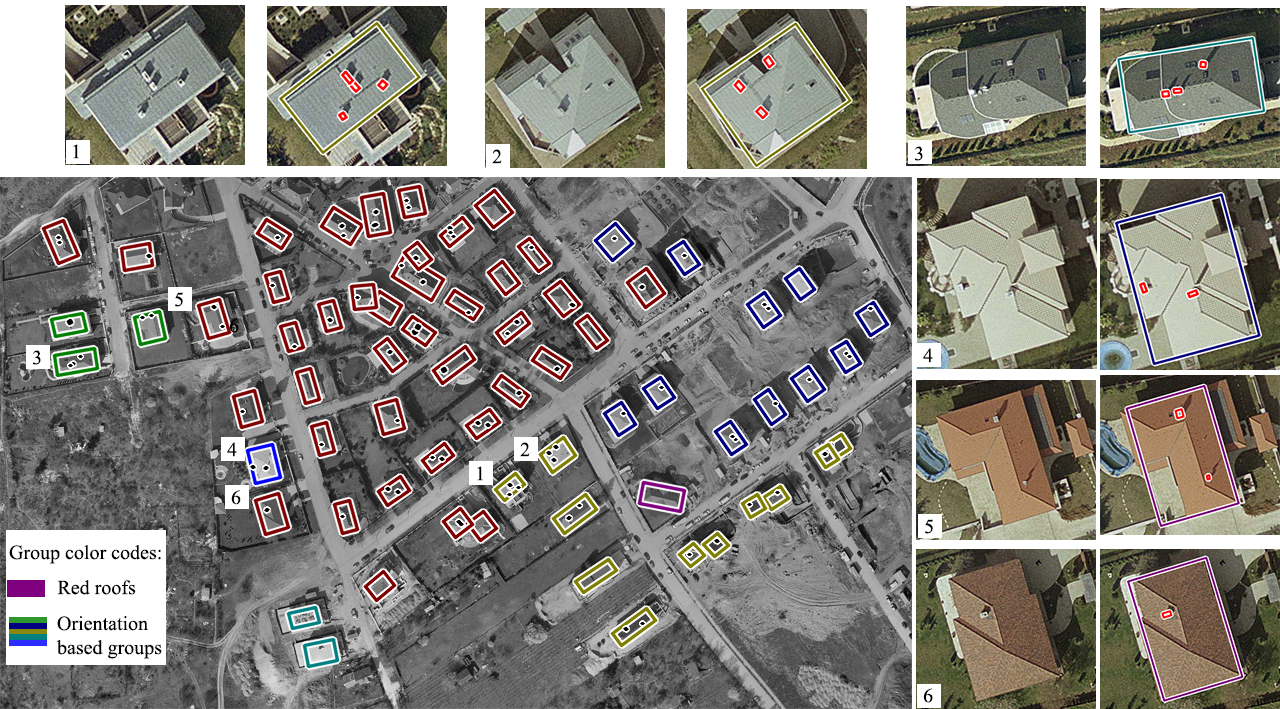GeoComp benchmarks
Research Group on Geo-Information Computing (GeoComp)
Embedded Marked Point Process Framework
In this paper we introduce a probabilistic approach for extracting complex hierarchical object structures from digital images used by various vision applications. The proposed framework extends conventional Marked Point Process (MPP) models by (i) admitting object-subobject ensembles in parent-child relationships and (ii) allowing corresponding objects to form coherent object groups, by a Bayesian segmentation of the population. Different from earlier, highly domain specific attempts on MPP generalization, the proposed model is defined at an abstract level, providing clear interfaces for applications in various domains. We also introduce a global optimization process for the multi-layer framework for finding optimal entity configurations, considering the observed data, prior knowledge, and interactions between the neighboring and the hierarchically related objects. The proposed method is demonstrated in three different application areas: built in area analysis in remotely sensed images, traffic monitoring on airborne and mobile laser scanning (Lidar) data and optical circuit inspection. A new benchmark database is published for the three test cases, and the model's performance is quantitatively evaluated.
Detection results for the built in area analysis problem:

Benchmark dataset
The Benchmark dataset prepared for this project is available here.
Reference
[1]Cs. Benedek: "An Embedded Marked Point Process Framework for Three-Level Object Population Analysis", IEEE Trans. on Image Processing, vol. 26, no. 9, pp. 4430-4445, 2017, IF: 5.071

Links
Geo-Information Computing @ Machine Perception Lab.
GeoComp Demos:
Contact
GeoComp Group leader: Dr. Csaba Benedek benedek.csaba@sztaki.hu
i4D project manager: Dr. Zsolt Jankó janko.zsolt@sztaki.hu
Head of MPLab: Prof. Tamás Szirányi
MPLab administration: Anikó Vágvölgyi
Address:
SZTAKIKende utca 13-17
H-1111 Budapest, Hungary Tel: +36 1 279 6194
Fax: +36 1 279 6292